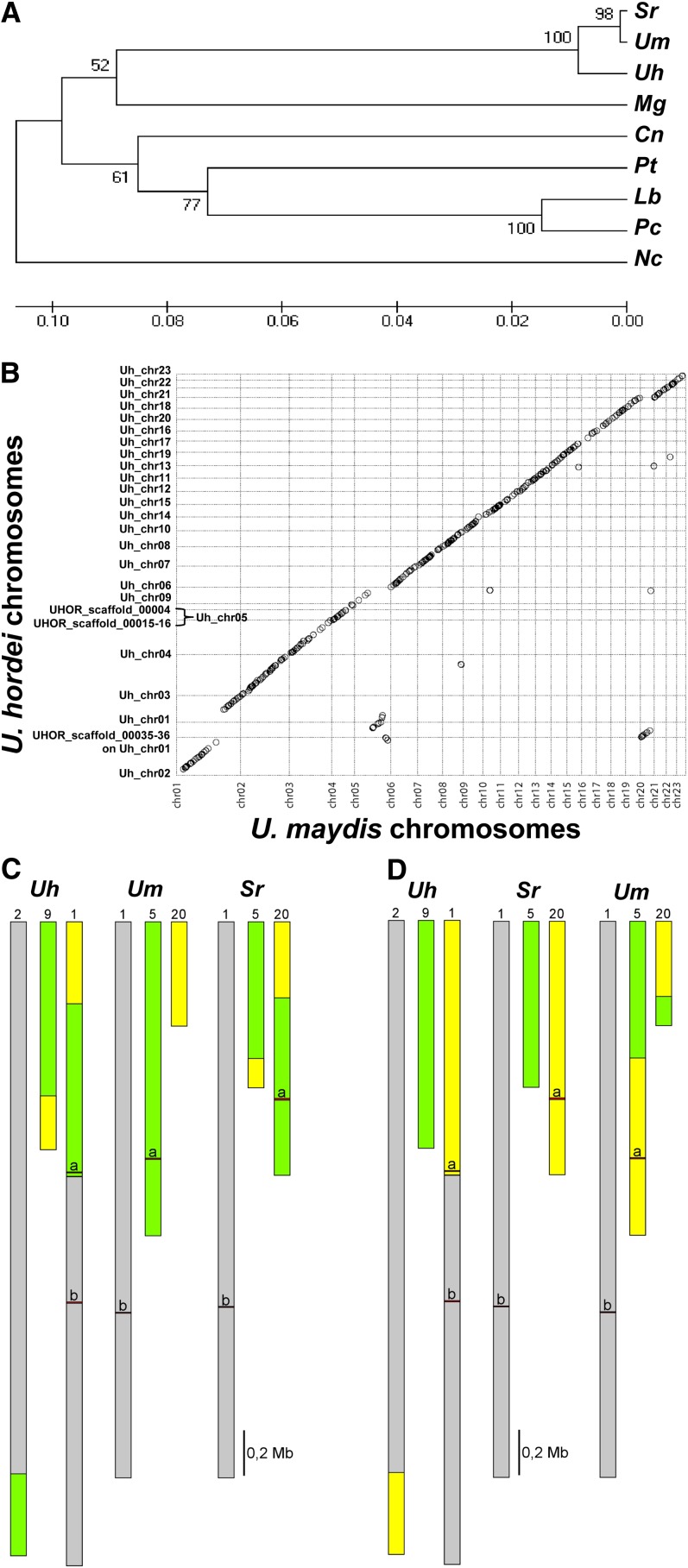Figure 2.
Taxonomic Placement of U. hordei and Genome Synteny with U. maydis and S. reilianum.
(A) Evolutionary placing of U. hordei in relation to other fungi. Consensus tree using the unweighted pair group method with arithmetic mean with bootstrap support (1000 replicates) based on β-tubulin protein sequences (Cn, C. neoformans CNC03260; Lc, Laccaria bicolor XP_001883306; Mg, M. globosa MGL_1528; Nc, N. crassa NCU04054; Pc, Phanerochaete chrysosporium e_gwh2.10.156.1; Pt, Puccinia. triticina PTTG_02454; Sr, S. reilianum sr16450; Uh, U. hordei UHOR_08314; Um, U. maydis um05828). All positions containing gaps and missing data were eliminated from the data set prior to computing evolutionary distances using the Poisson correction method (Zuckerkandl and Pauling, 1965) conducted in MEGA5 (Tamura et al., 2011).
(B) Dot plot of the synteny occurring between the chromosomes of U. maydis and the assembled supercontigs of U. hordei, created using the program nucmer from the MUMmer program package (http://mummer.sourceforge.net/).
(C) Synteny comparison of the indicated chromosomes of U. hordei and S. reilianum to those of U. maydis.
(D) Synteny comparison of the indicated chromosomes of U. hordei and U. maydis to those of S. reilianum. Syntenic parts are indicated by the same color.

